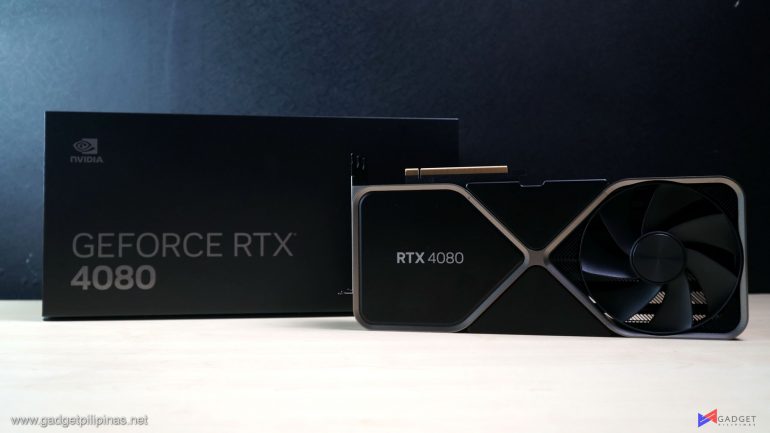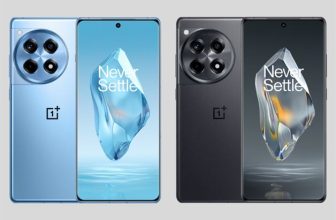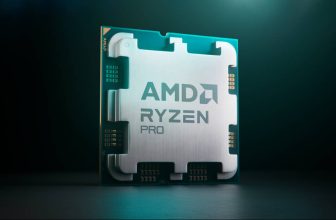Among the recently announced RTX 40 series, the RTX 4080 graphics card will most likely be the most coveted RTX 40 GPU given its much more reasonable pricing when compared to the RTX 4090. However, reasonable may be quite a bit of a stretch as we’re seeing a $200 price increase over the RTX 3080 when it launched. That said, it’s the same situation with the RTX 4090 which we discussed in our review and remarked that it’s well worth it. We have the Nvidia GeForce RTX 4080 Founders Edition to see if holds up to the glory of the RTX 4090 and justifies its price premium over the last generation with its performance, features, price, and cooling.
Nvidia Ada Lovelace Architecture
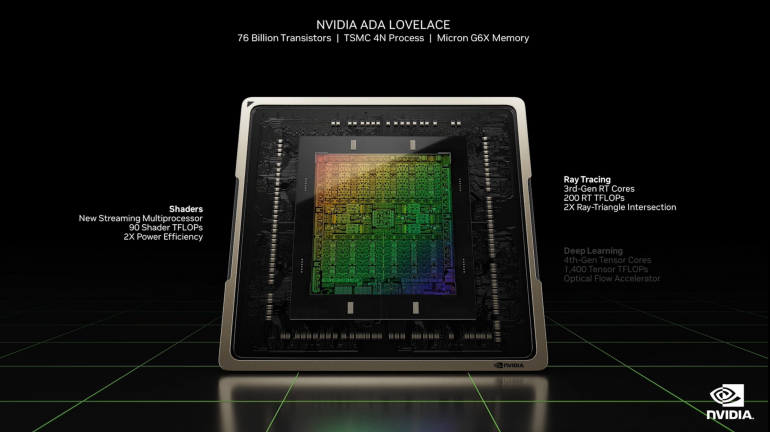
Following the success of the RTX 30 series card and the Ampere architecture, Nvidia continues to double down on its proven and tested formula with the debut of the Nvidia Ada Lovelace architecture featuring 76 Billion Transistors. Nvidia has moved from Samsung 8N to TSMC’s 4N process, resulting in much bigger performance gains and slighter higher pricing as TSMC recently hiked up its prices. The new Ada Lovelace features 3rd Generation RT Cores at 200 RT TFLOPs and 4th Gen Tensor Cores for 1,4000 TFLOPs as well as a new streaming multiprocessor with up to 2x power efficiency. Moreover, Ada Lovelace also brings in new features exclusive to the RTX 40 series graphics card such as DLSS 3, AV1 Encoding, and Shader Execution Reordering.
Shader Execution Reordering
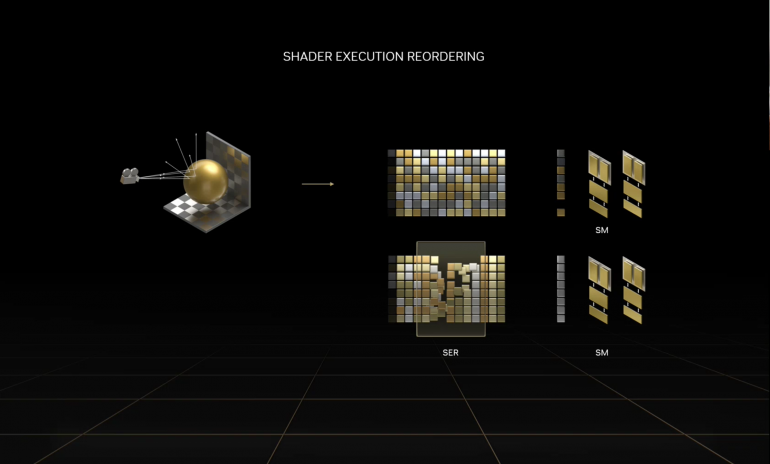
Shader Execution Reodering largely contributes to the performance gains of the RTX 40 series GPUs thanks to the more efficient usage of the shaders. SER is a scheduling system that reorders shading work on-the-fly for better execution efficiency, especially on ray-traced workloads. Think hyperthreading plus thread director but for GPUs particularly the RTX 40 series where the rays are reordered so that the ones that are running on the same program or similar are grouped together resulting in the shader working consistently instead of waiting on each other.
SER is an NVAPI extension meaning that developers would have to enable it on their games. We should expect SER to be heavily and quickly adopted especially in games where there are already Nvidia features enabled such as Reflex, RTX, and DLSS.
Nvidia DLSS 3
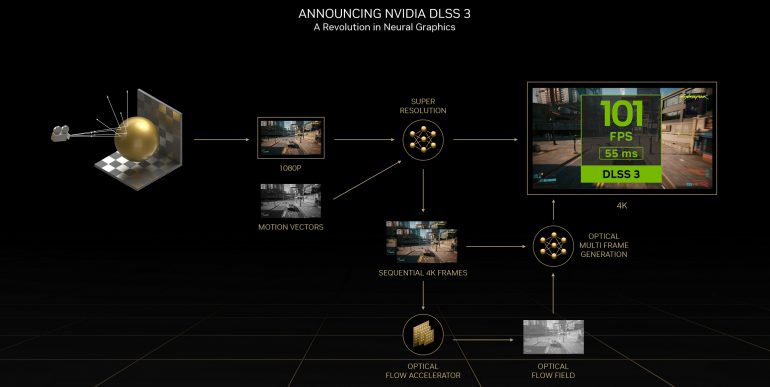
DLSS 3 uses the 4th Gen Tensor Cores and the Optical Flow Accelerator of the RTX 40 series to improve overall performance using AI-generated frames. In addition to already upscaling existing frames like DLSS 2, DLSS 3 generates intermediate frames in your game aka inserting AI-generated frames to improve performance. The RTX 40 series GPU will analyze two in-game frames and generate an optical flow field, closely looking at all elements in the game and using the information gathered to construct a frame in between. Additionally, DLSS 3 incorporates Nvidia Reflex ultra-low-latency solution making your games way more responsive and providing more frames. Games that support DLSS 3 will automatically support Nvidia Reflex.
DLSS 3 can be used by older Nvidia RTX graphics cards but won’t be able to fully maximize the feature as the biggest improvement of the technology, Frame Generation, is exclusive to the RTX 40 series graphics cards.
Nvidia RTX 40 Series Specifications
| RTX 40 SERIES SPECS | GeForce RTX 4090 | GeForce RTX 4080 16GB | GeForce RTX 4080 (12GB) – UNLAUNCHED |
|---|---|---|---|
| Cores | 16,384 | 9,728 | 7,680 |
| Boost Clock (GHz) | 2.52 | 2.51 | 2.61 |
| Base Clock (GHz) | 2.23 | 2.21 | 2.31 |
| Memory Config | 24GB GDDR6X | 16GB GDDR6X | 12GB GDDR6X |
| Memory Interface | 384-bit | 256-bit | 192-bit |
| Graphics Power | 450W | 320W | 285W |
| Required System power | 850W | 750W | 700W |
| Price | Php 112,300 | Php 84,200 | Php 63,200 |
Three graphics cards were announced at GTC 2022 namely the GeForce RTX 4090 and two variants of the RTX 4080, a 16GB and 12GB variant similar to the current RTX 3080 that has a 10GB and 12GB version. The RTX 4090 is the brand’s flagship graphics card however the 4090 isn’t the maxed-out version of the AD 102 GPU so we’re expecting an RTX 4090 Ti in the future, should Nvidia see the need to release one. Going back to the RTX 4090 and 3090 Ti, the 4090 is only $100 more than the launch price of the latter and is considerably cheap when you take into account the performance gains, inflation, and global economic recession that we’re in.
A few days later after the launch, Nvidia “unlaunched” the 12GB variant of the RTX 4080 stating that it wasn’t named right. It’s set to relaunch next year with a different name presumably under the RTX 4070 series but we’re not yet sure as we have no conclusive proof or leaks with its final naming scheme. That said, the RTX 4080 16GB will now then be referred to as RTX 4080 as there’s no need to specify its memory size since we no longer have the 12GB variant.
Nvidia RTX 4080
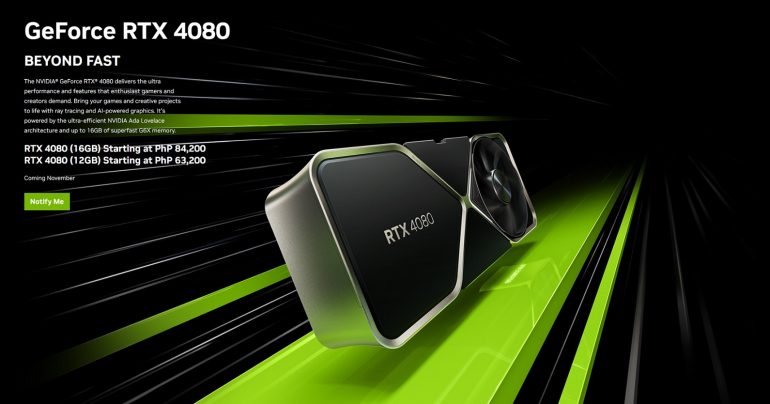
The RTX 4080 16GB GDDR6X has 9728 CUDA Cores, a 2210 MHz Base, and a 2510 MHz Boost clock which translates to around only 60 percent of the RTX 4090’s total CUDA cores but with a slightly higher base and boost clocks. Power consumption-wise, the RTX 4080 16GB is rated at 320W with a recommended PSU of 750W, around 30% lower TDP than the flagship RTX 4090.
Nvidia GeForce RTX 4080 Founders Edition Unboxing and Overview
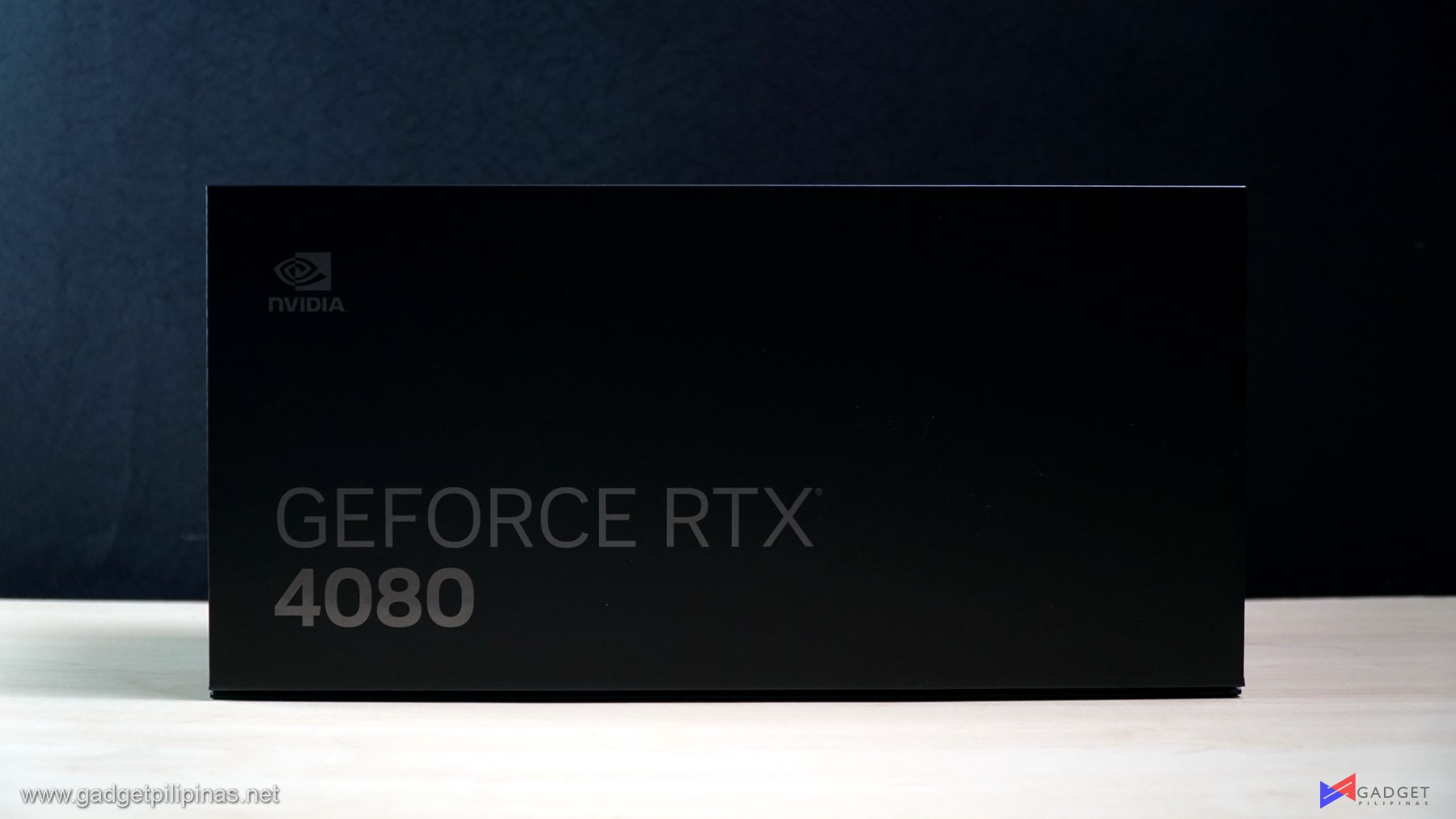
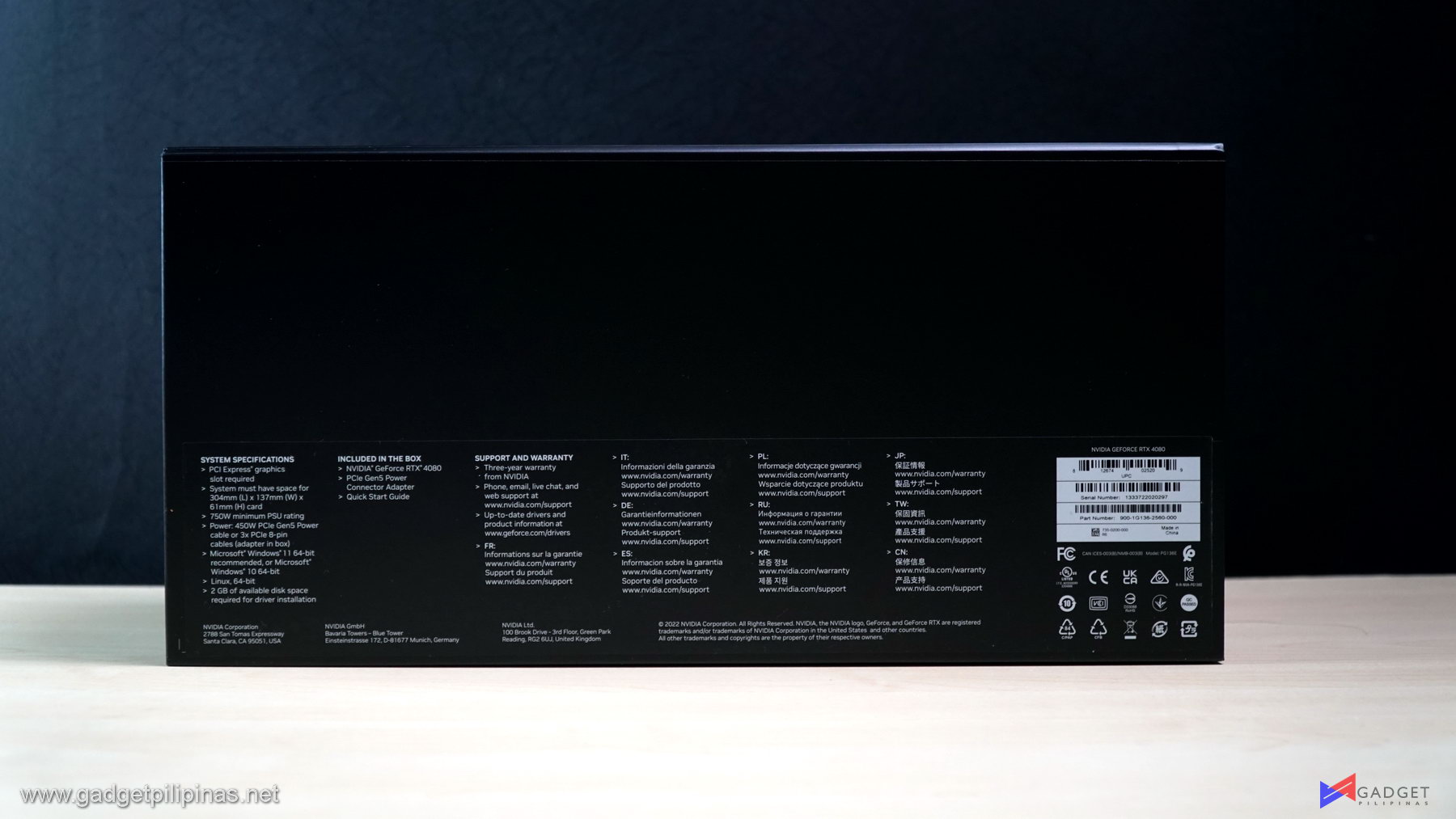
Nvidia has redesigned its founder’s edition packaging to accommodate for the RTX 4090 FE’s large footprint. The packaging uses the new GeForce font which is frankly not that appealing compared to the ones found in previous generations. Font aside, the packaging looks more premium with little to no markings except for the Nvidia logo and GeForce RTX 4090 product name in a bronze shade.
The Nvidia RTX 4080 Founders Edition uses the same packaging style and art as the RTX 4090 Founders Edition card as well. The only noticeable difference between the two is the RTX 4080 FE box uses a more silver color as opposed to the RTX 4090 FE’s bronze color scheme. The subtle difference in colors is the same as the previous RTX 3090 FE and RT 3080 FE cards.
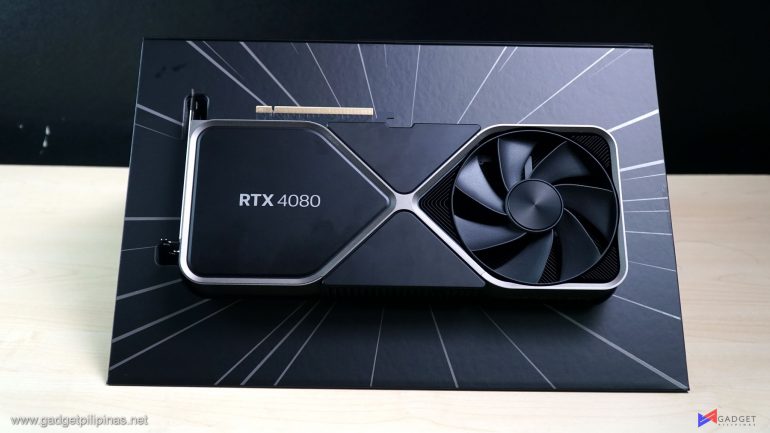
The hyperspace style background upon unboxing the package is also of the same shade as the font on the packaging.
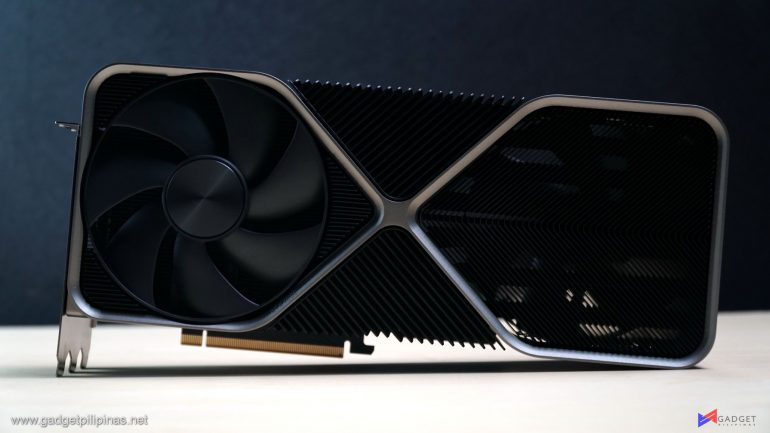
Like the packaging, the cooler design on the RTX 4080 Founders Edition is the same as the RTX 4090 FE with the difference being, you guessed it, the silver accents on the 4080 as opposed to the bronze of the RTX 4090. The silver highlights or highlights whatever you call it make the new hourglass style FE cooler look more premium and refreshing.
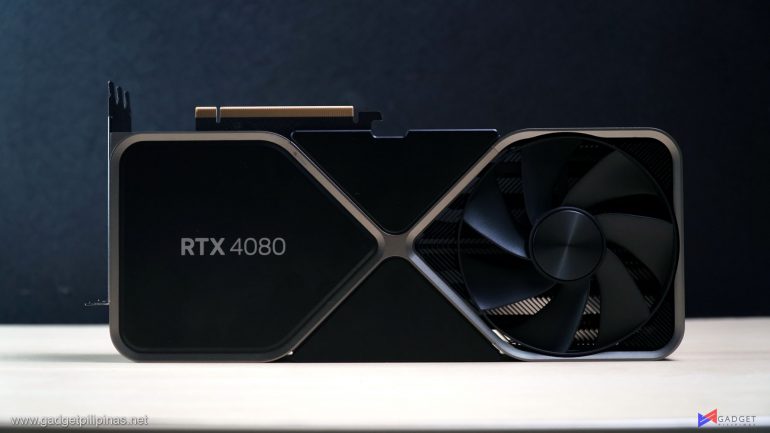
The back tells the same story with the same design and silver accents exclusive to the RTX 4080 line.
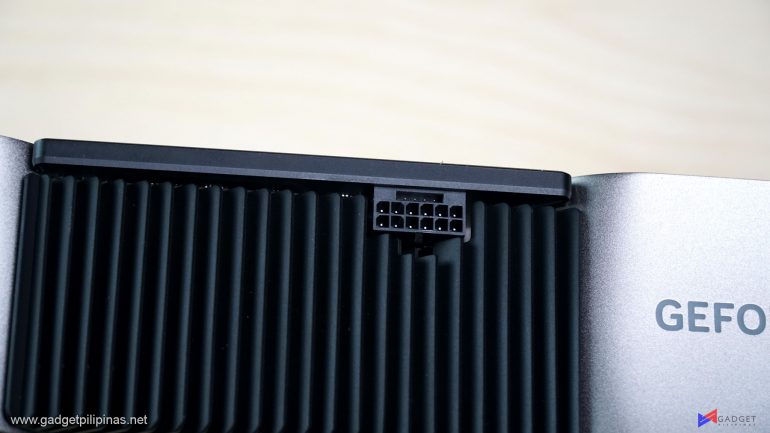
Like the rest of the RTX 40 series, the RTX 4080 FE uses the infamous 12VHWPR connector albeit the RTX 4080 is rated at a 320W TDP, 130W less than the RTX 4090, and is actually the same TDP as the previous generation RTX 3080.
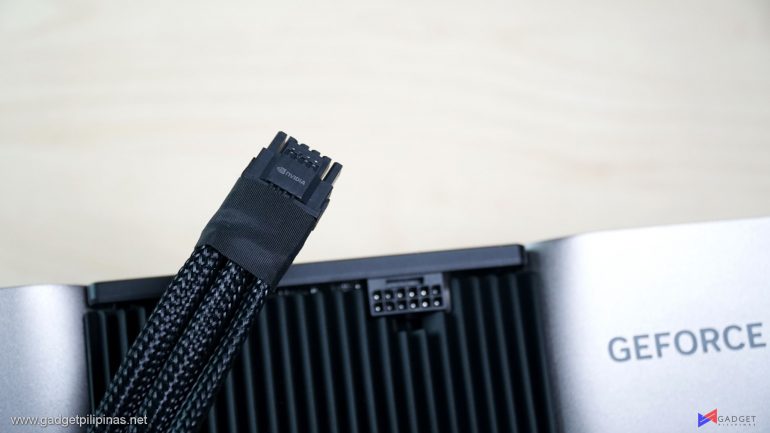
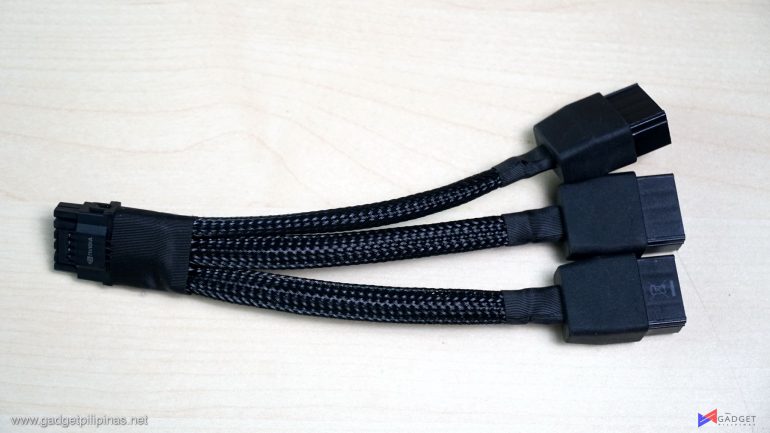
With the RTX 4080 having only a 320W TDP, the included 12VHPWR adapter only uses three 8-pin PCI-E connectors. Three 8pin PCI-E cables are more than enough to power the RTX 4080 even with OC models as three cables should have a max power of 450W.
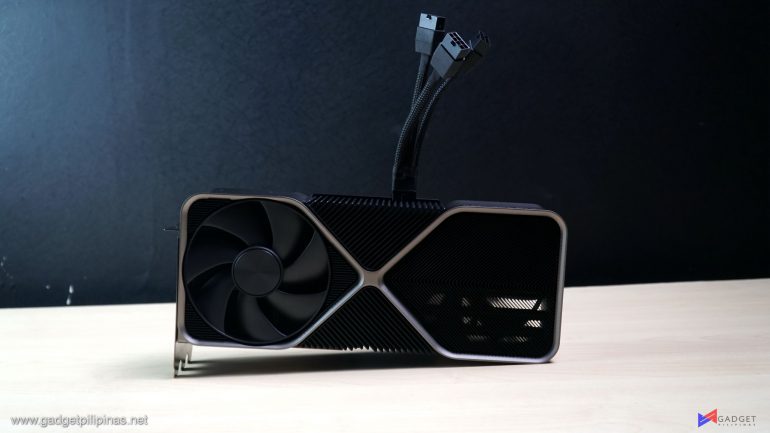
The included adaptor feels less sturdy and is more malleable due to it having one less cable for another 8-pin compared to RTX 4090 adapters. While it indeed is more flexible, Nvidia still recommends the same additional 36 mm of side clearance of your chassis should you use the adapter instead of a direct ATX 3 PSU.
If you’re concerned over the rumored power consumption behavior, meltdown, warnings, hazards, and compatibility with the new connector, Nvidia has published a general FAQ of the RTX 40 series power specifications. That said, We’ve parsed through the linked article and we’re confident with Nvidia’s claims, and our time testing the RTX 4090 FE, Colorful RTX 4090 Vulcan, and RTX 4080 FE didn’t show any out-of-place behavior as opposed to the rumors circulating the community.
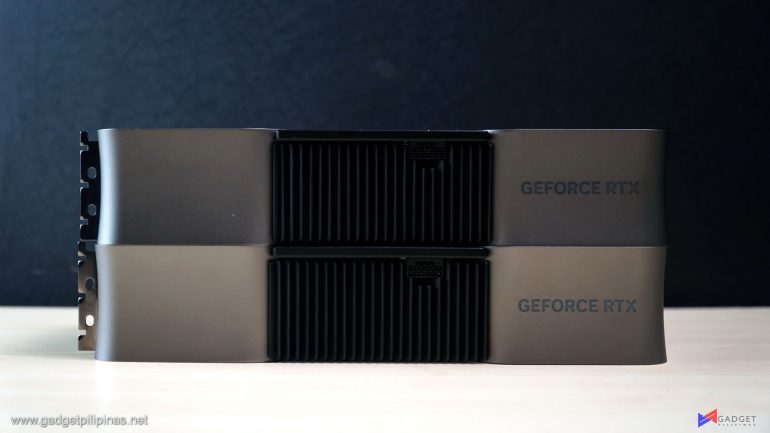
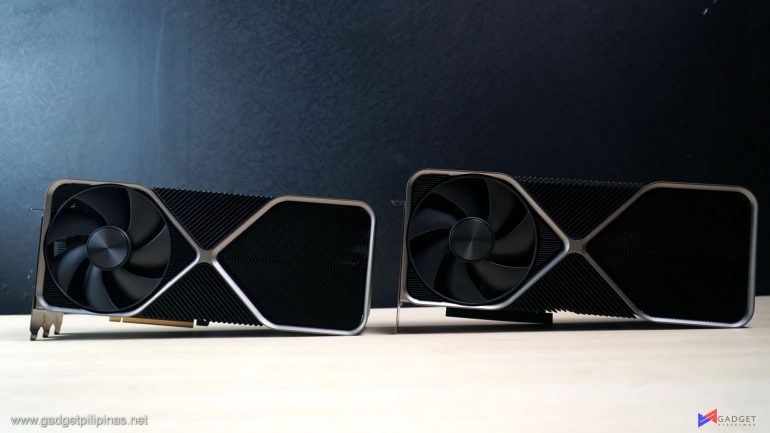
The Nvidia GeForce RTX 4080 Founders Edition measures 304 mm x 137 mm x 61 mm, exactly the same as the RTX 4090 Founders Edition. However, there is a noticeable difference in their weight as the RTX 4090 FE is heavier likely due to it having a higher fin density to properly cool the AD102 chip with a 450W TDP. That said, the RTX 4080 FE suffers the same case compatibility issue that plagues the RTX 4090 so keep that in mind. If you’re hoping that the RTX 4080 would be thinner like RTX 3080 to fit ITX cases then sorry to say that you’re out of luck.
Test Bench Setup and Benchmark Methodology
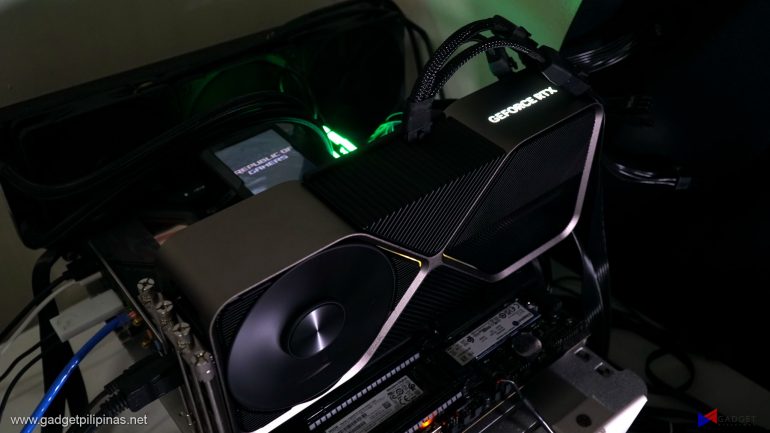
Gadget Pilipinas’ testing philosophy is to provide detail-oriented results as accurately as possible so that our readers can replicate our tests given that these conditions are met. Different benchmarking apps and sequences are used depending on the component or device being tested.
RTX 4080 Founders Edition Testbench Specs
| CPU | Intel Core i9 13900K |
| COOLER | ASUS ROG RYUJIN II 360mm V2 – Noctua NT-H2 Thermal Paste |
| MOTHERBOARD | Gigabyte Z790 Aorus Master |
| MEMORY | Kingston Fury Beast RGB 32GB(2x16GB) 6000 MHz DDR5 |
| GPU | Nvidia RTX 4090 FE | Colorful iGame RTX 4090 Vulcan OC-V | RTX 4080 FE | ASUS TUF RTX 4080 | 526.72 driver |
| STORAGE | Kingston KC3000 1TB PCI-E Gen 4 SSD |
| POWERSUPPLY | ROG Thor 1000W Platinum II PSU |
| OPERATING SYSTEM | Windows 11 Pro Build 22H2 |
| DISPLAY | Lenovo Legion Y27Q Gaming Monitor |
We use CapFrameX 1.7.0 Beta as our primary FPS capture and analysis tool for all our gaming benchmarks. The latest build version of Windows 11 Pro and WHQL-certified drivers are used for our benchmarks. Readings such as temperatures and power draw are recorded using HWINFO64, and other relevant software for cross-checking.
Nvidia RTX 4080 Founders Edition Benchmarks
COUNTER-STRIKE: GLOBAL OFFENSIVE
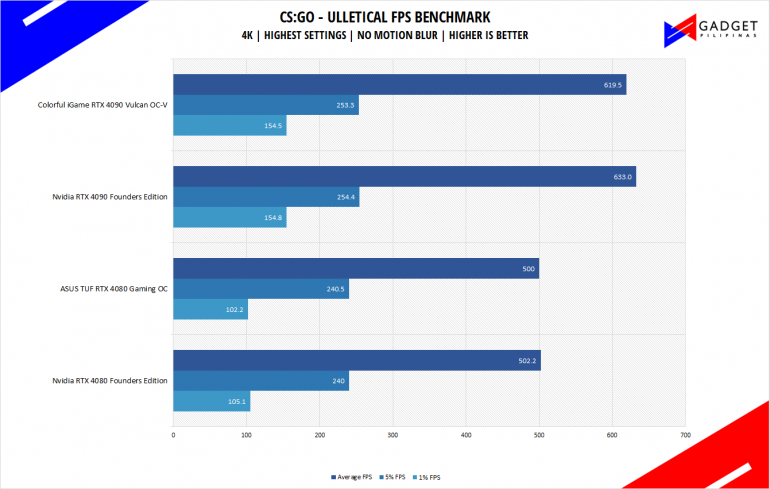
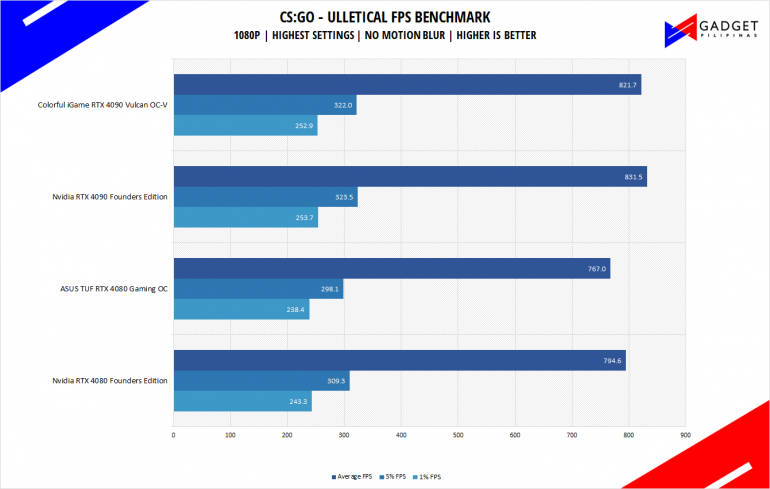
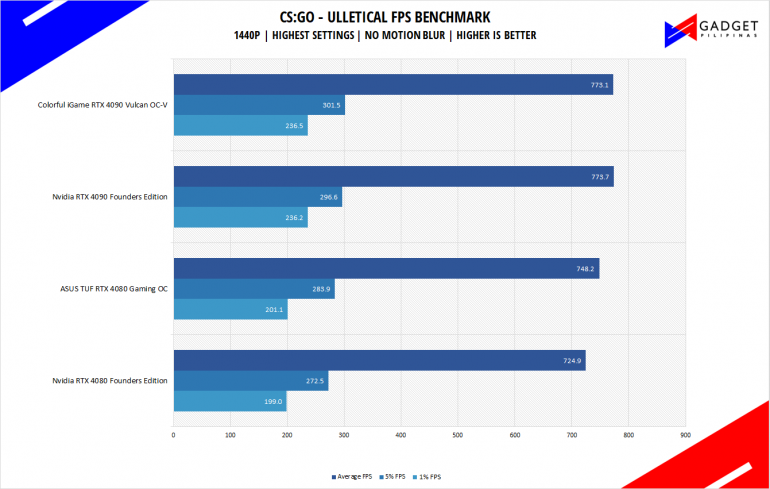
Counter-Strike: Global Offensive aka CSGO is an 11-year-old first-person shooter title that’s still widely popular despite its old Source Engine. CS:GO is a great game to test out CPU performance as the game is heavily CPU-dependent like any other FPS title. Our CS:GO benchmark process uses ULLETICAL’s FPS Benchmark workshop mod to measure the hardware’s performance.
DOTA 2
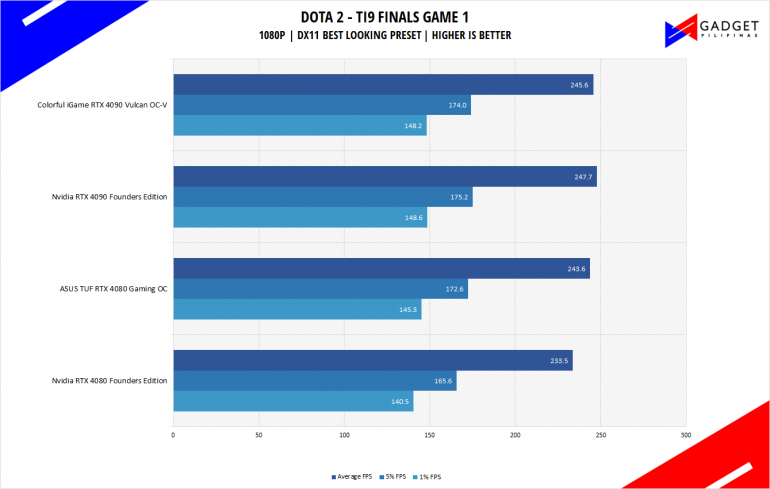
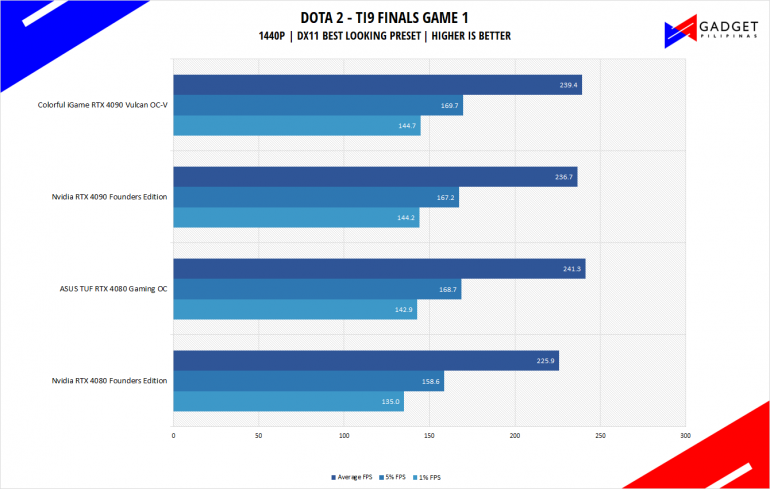
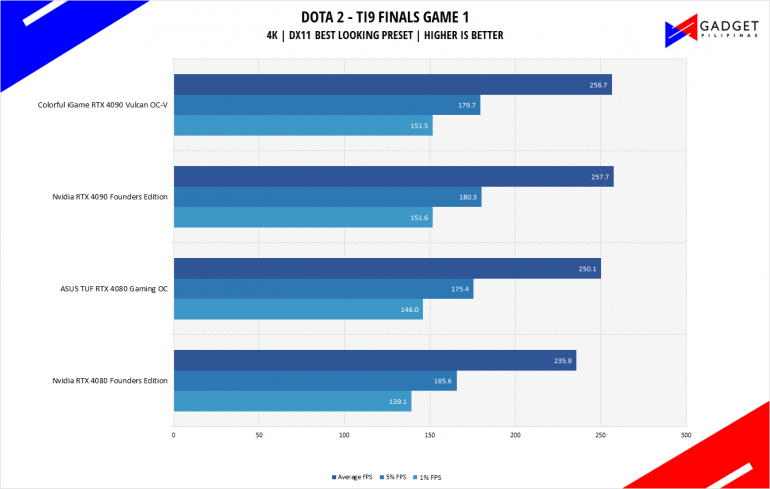
Most gamers play at least one of the following free-to-play titles: League of Legends, CS: GO, Dota 2, and/or Fortnite. Dota 2 is a good representation of the F2P titles as it is the most demanding game in the spectrum. The benchmark will give you an idea of the graphic card’s relative performance on other lesser demanding titles. Our benchmark sequence is based on a replay of OG vs. Liquid in the TI9 grand finals from the team fight that happened from 28:30 to 29:30.
Far Cry 5 & Far Cry 6
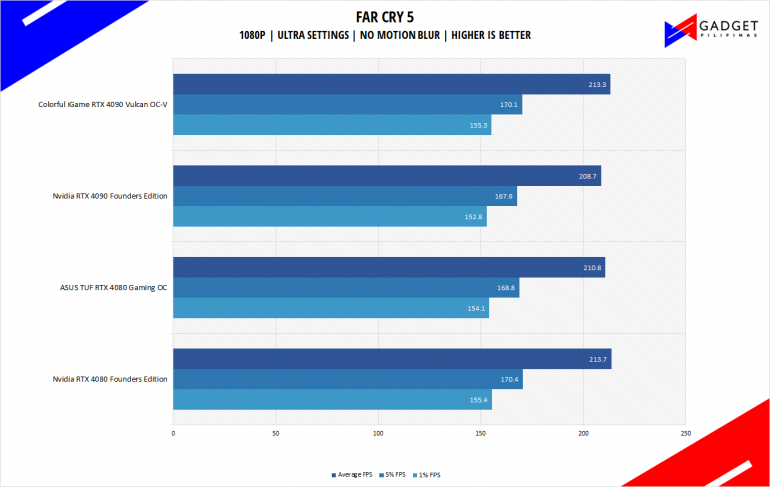
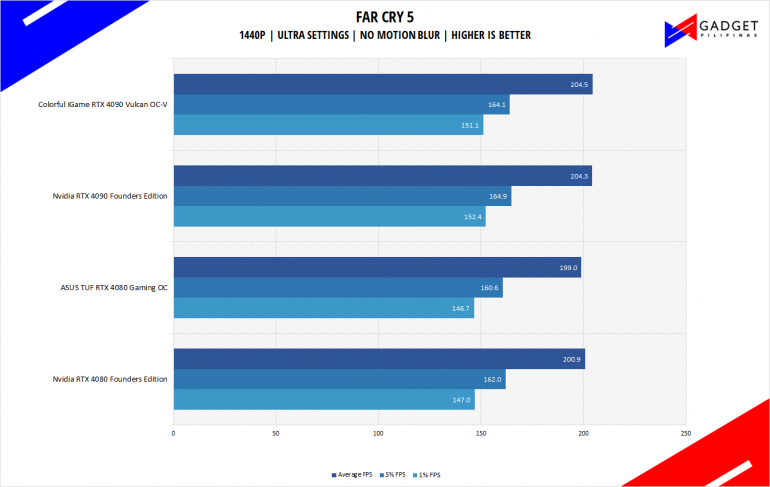
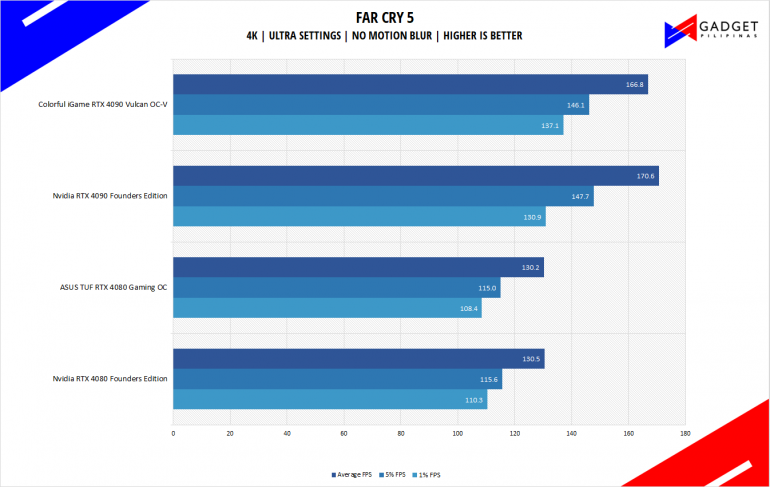
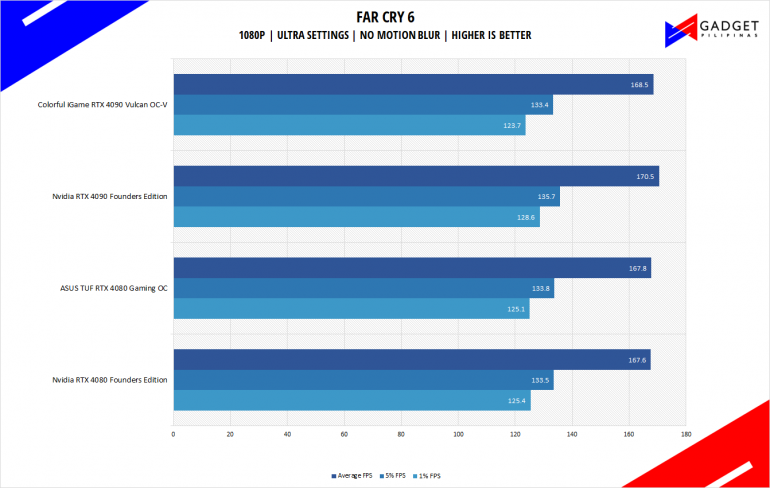
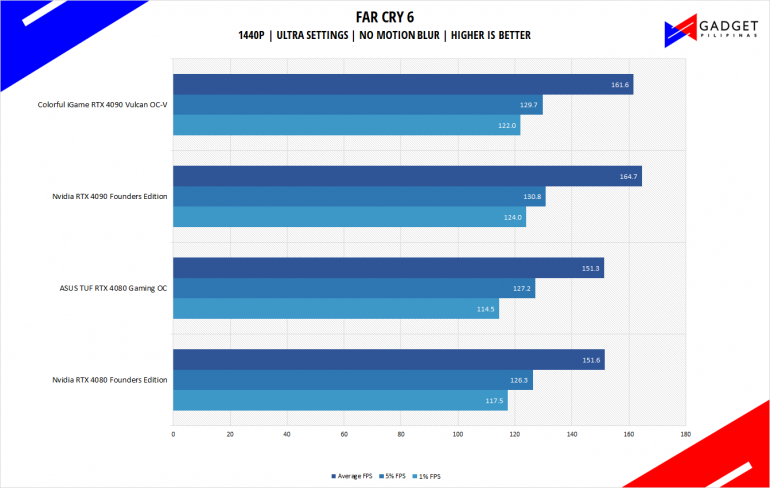
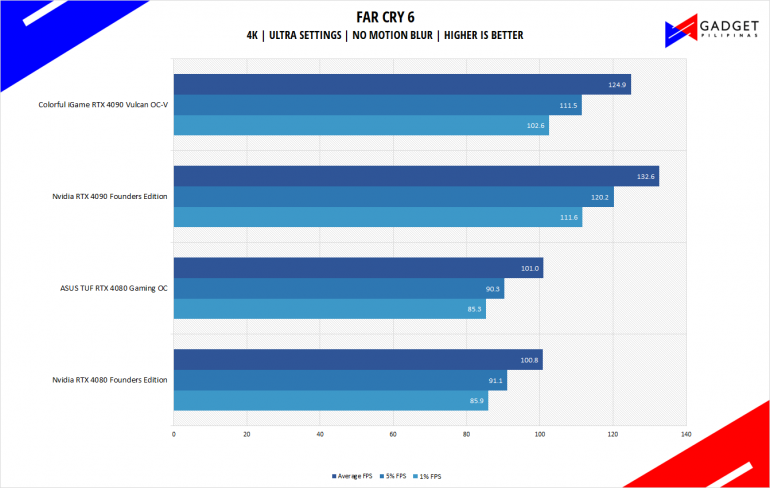
FarCry 5 is an FPS game published by Ubisoft and uses the Dunia engine. It heavily relies on and takes advantage of DirectX 11 to render a realistic environment that makes it taxing to both the CPU and GPU. Far Cry 6 is the latest installment in the franchise which utilizes DirectX 12 to run the virtual world of Yara.
Rainbow Six Siege
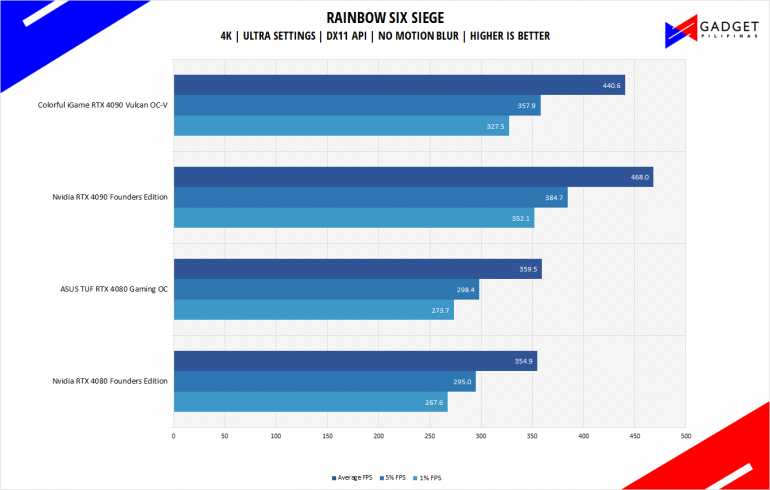
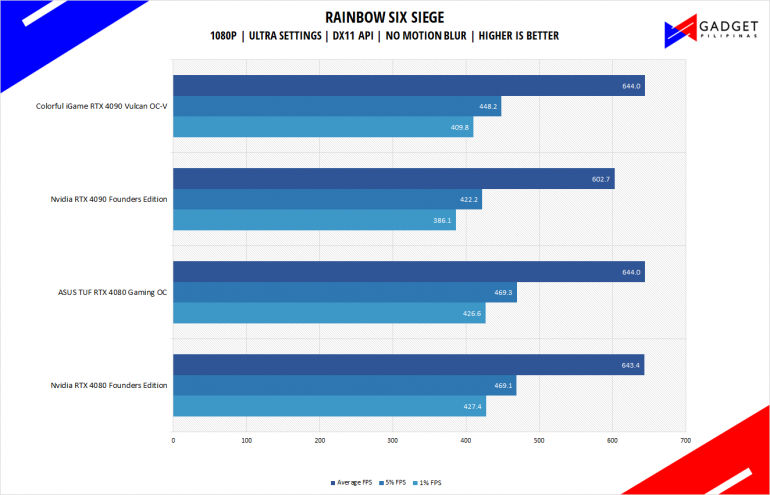
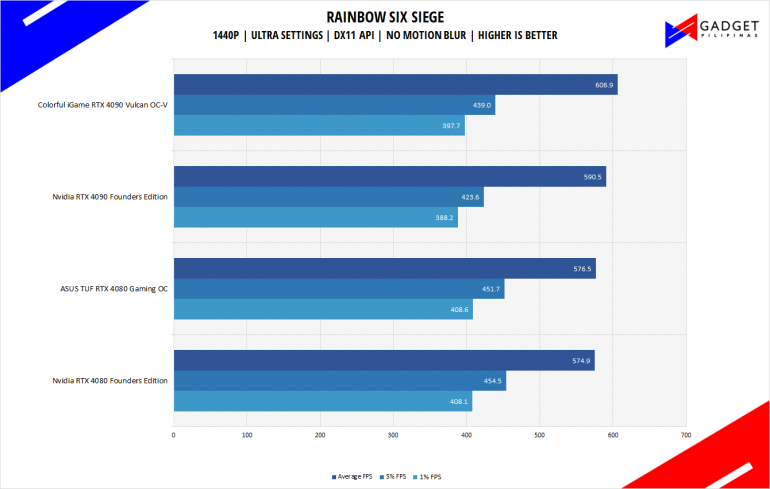
Rainbow Six Seige is one of the few popular AAA games that’s still popular in 2021 due to its competitive gameplay mechanics. R6S uses the AnvilNext game engine, which the game’s publisher, Ubisoft, developed. As of writing, Rainbow Six Siege is currently the most popular Tom Clancy title beating out Wildlands, Breakpoint, and even Division 2.
Cyberpunk 2077
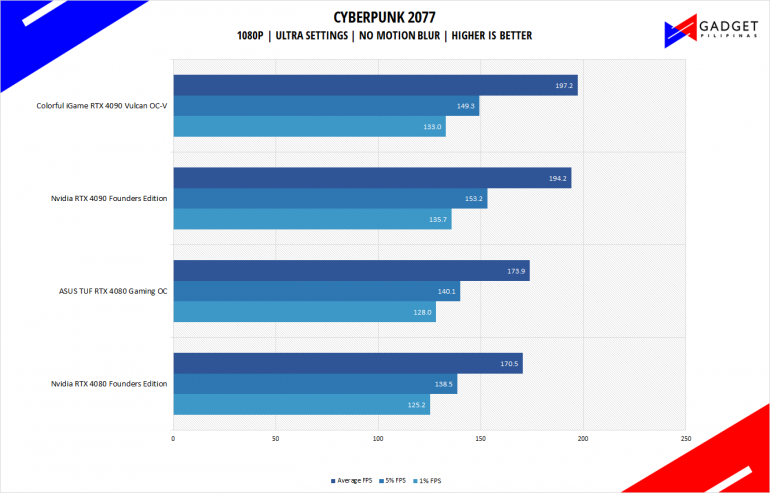
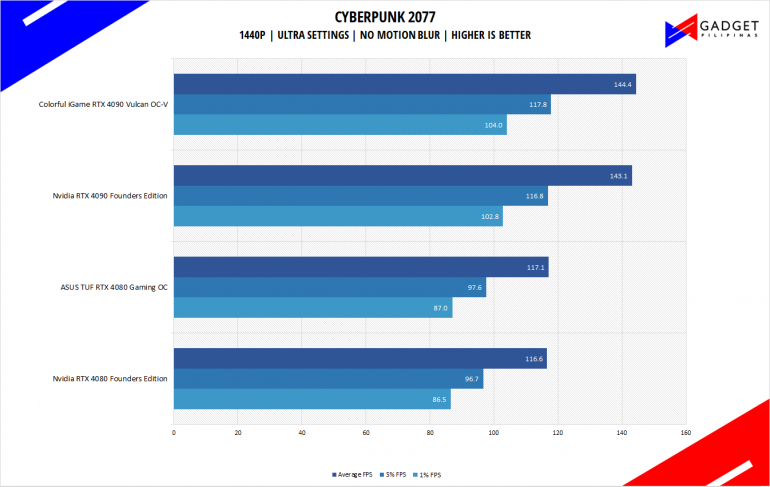
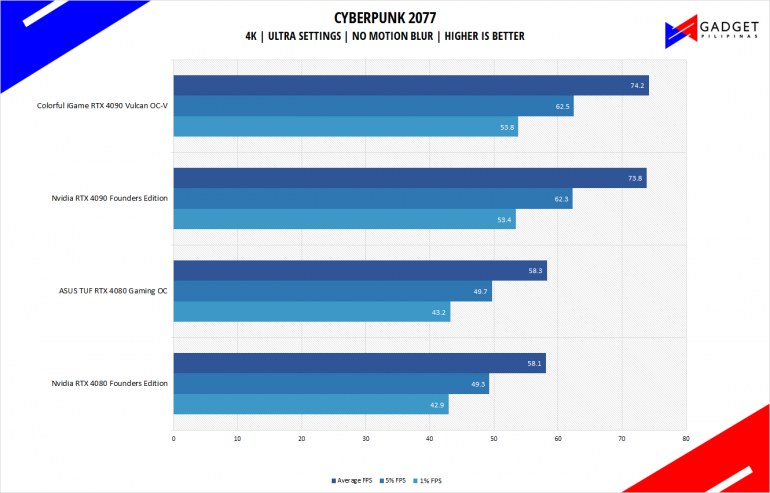
Cyberpunk 2077 is arguably the most hyped game of 2020. Developed by CD Projekt Red, the dystopian open-world, action-adventure RPG sports is one of the most demanding titles to date. Cyberpunk 2077 also supports three Ray Tracing settings as well as DLSS which makes the game a great tool to measure Ray tracing performance for both AMD and Nvidia graphics cards.
Shadow of The Tomb Raider
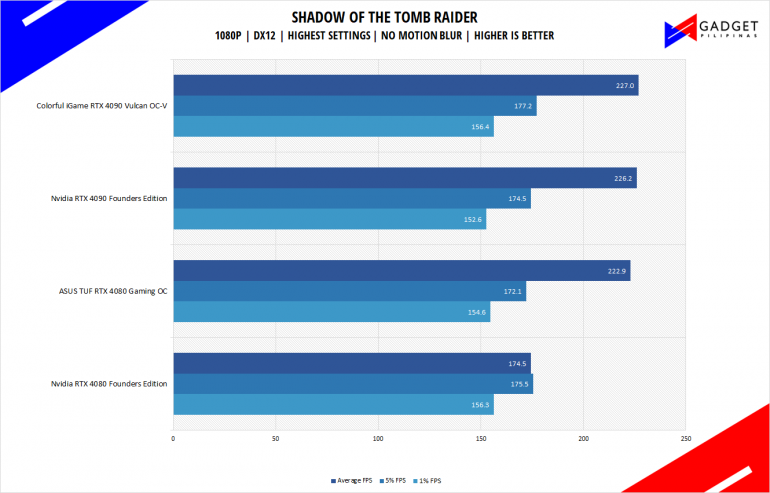
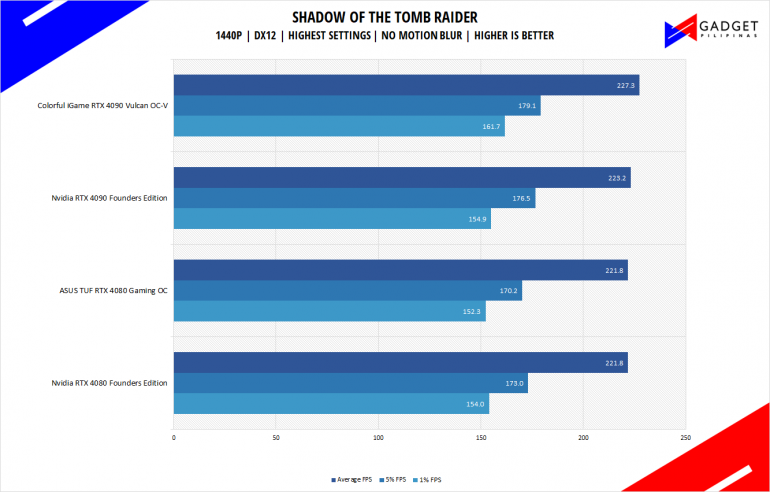
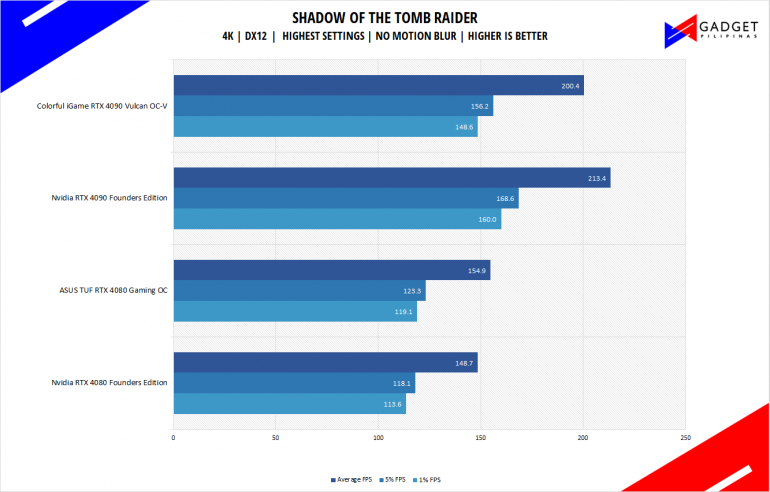
Shadow of The Tomb Raider or SOTR is the latest installment of the Lara Croft Tomb Raider franchise. Developed by Square Enix, SOTR uses the Foundation engine and is further enhanced by Eidos Montreal. SOTR is also one of the first games to come out with Ray Tracing and DLSS support.
Metro Exodus
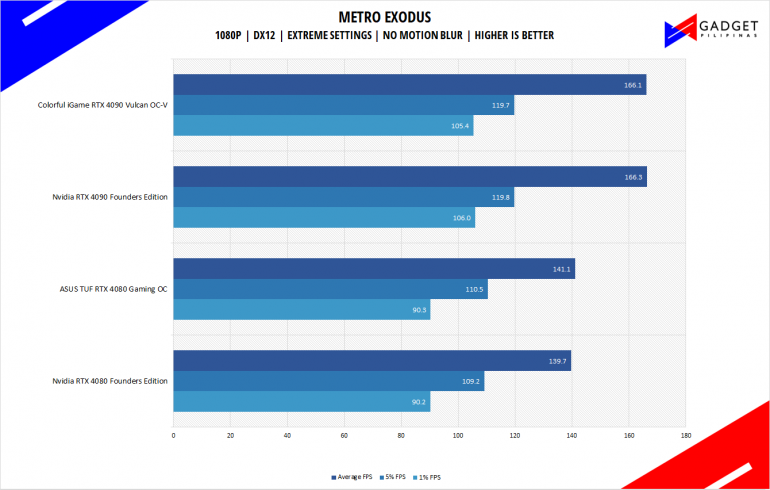
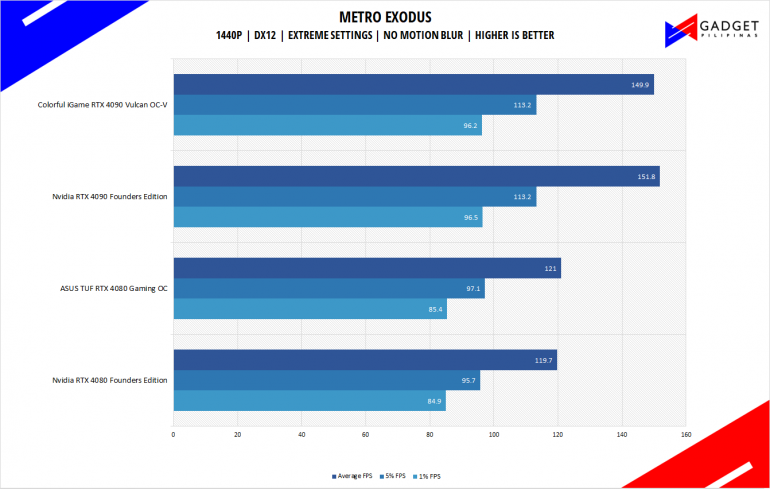
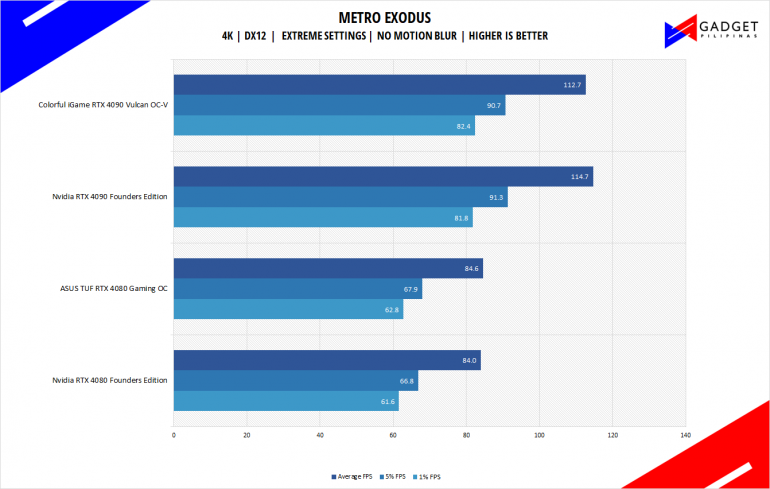
Metro Exodus is the third Metro game trilogy based on Dmitry Glukhovsky’s novels. The game is a first-person shooter with survival horror and stealth elements. The post-apocalyptic game uses 4A Engine by 4A games. Released last 2019, Metro Exodus remains to be one of the most graphically pleasing and demanding games that’s popular to date.
Assassin’s Creed: Odyssey and Valhalla
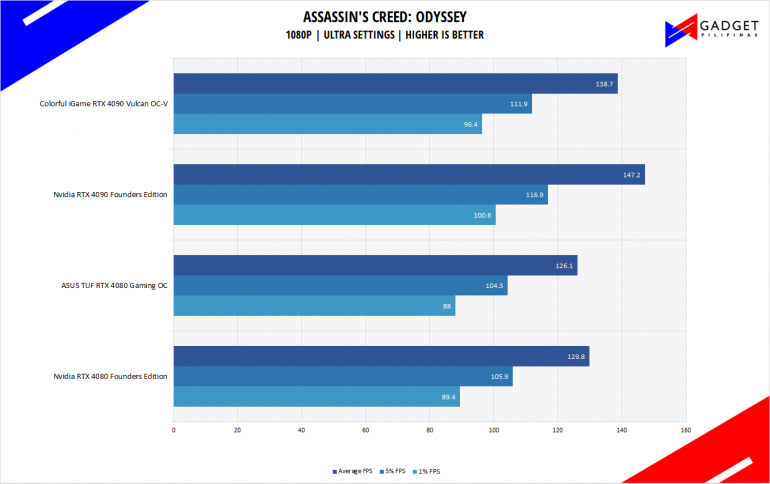
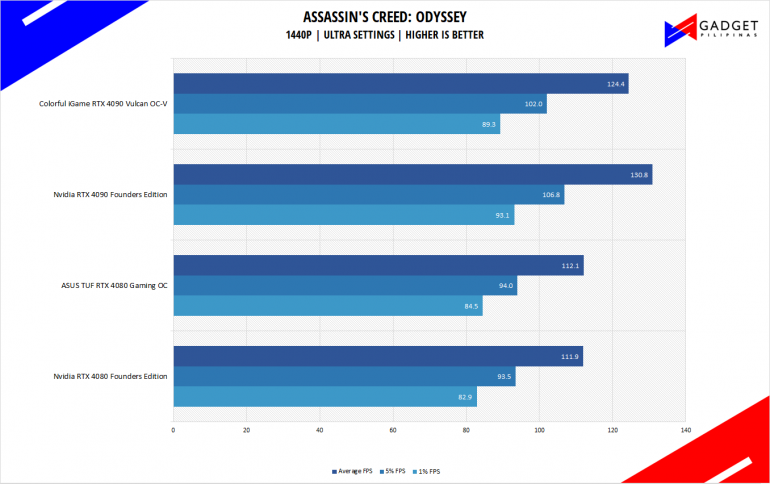
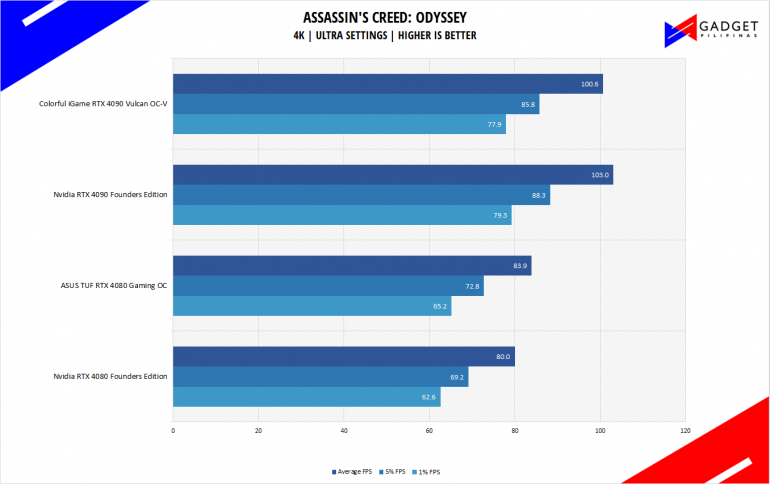
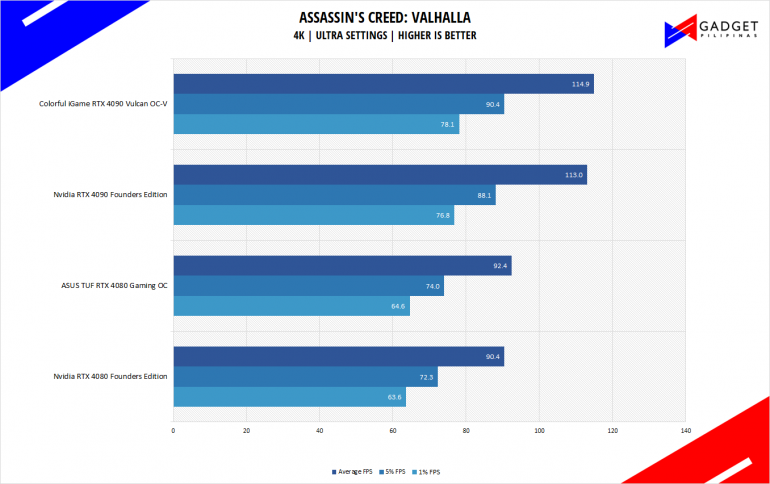
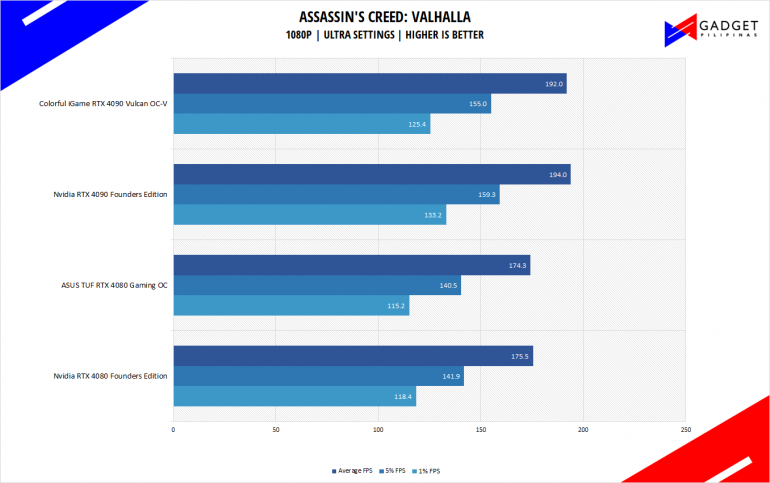
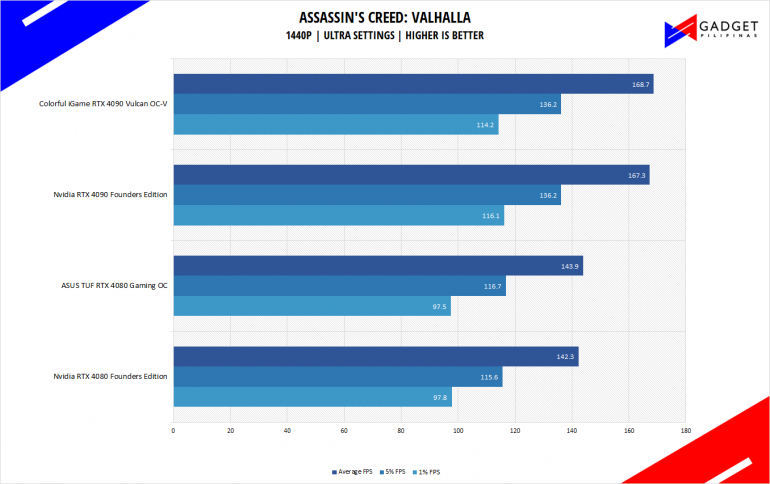
Assassin’s Creed Odyssey is the latest franchise installment from Ubisoft. It’s by far the most popular and stable Assassin’s Creed title since AC IV: Black Flag. It uses the AnvilNext 2.0 game engine, an updated version of Rainbow Six Siege’s game engine, and uses the DirectX 12 API.
F1 2020 and F1 22
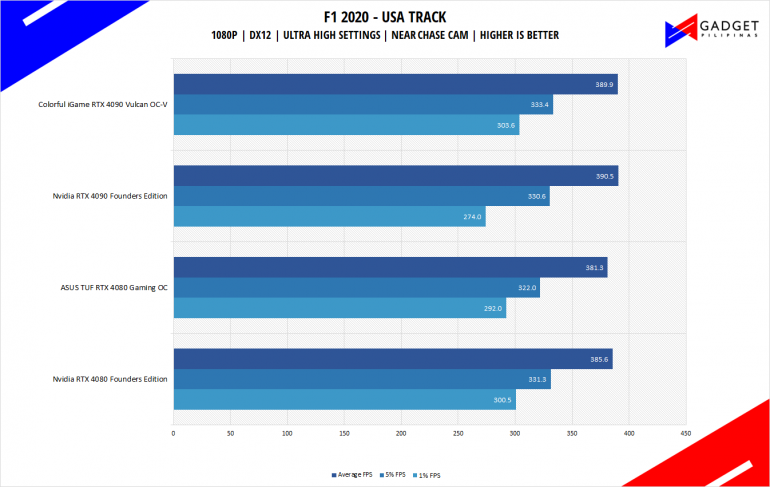
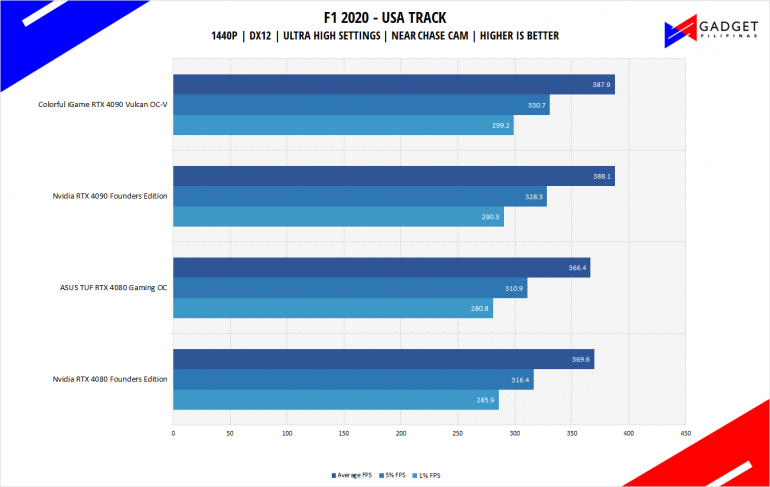
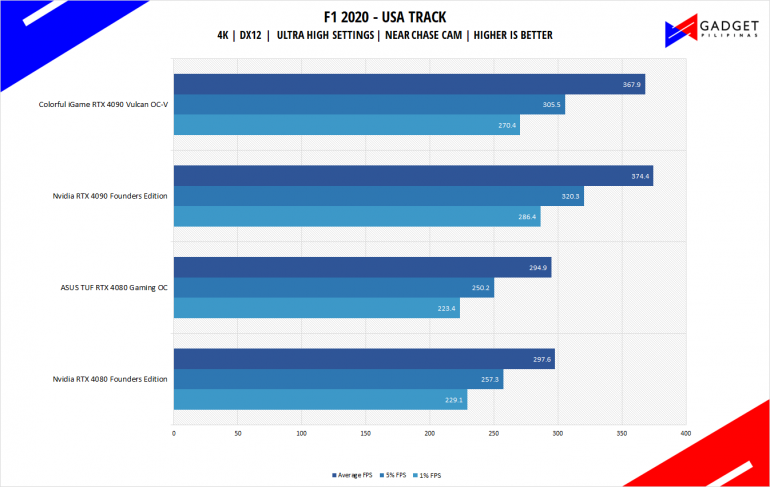
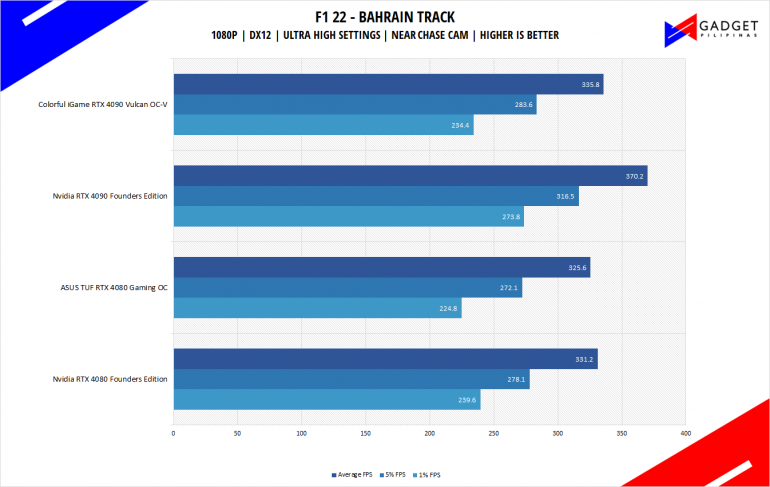
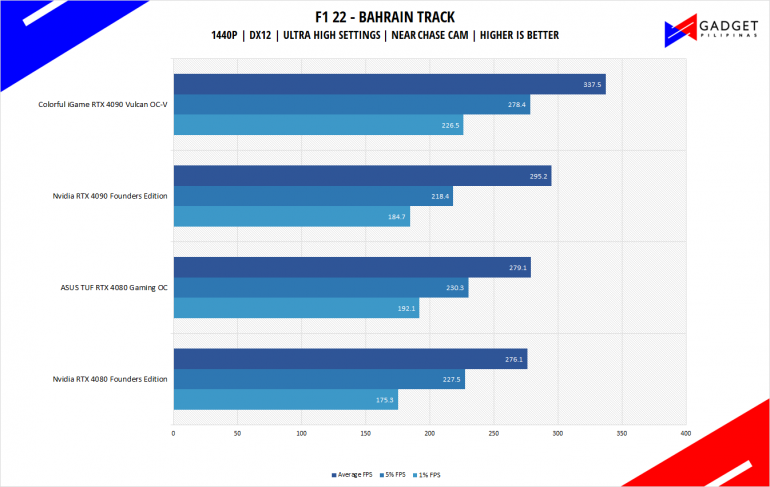
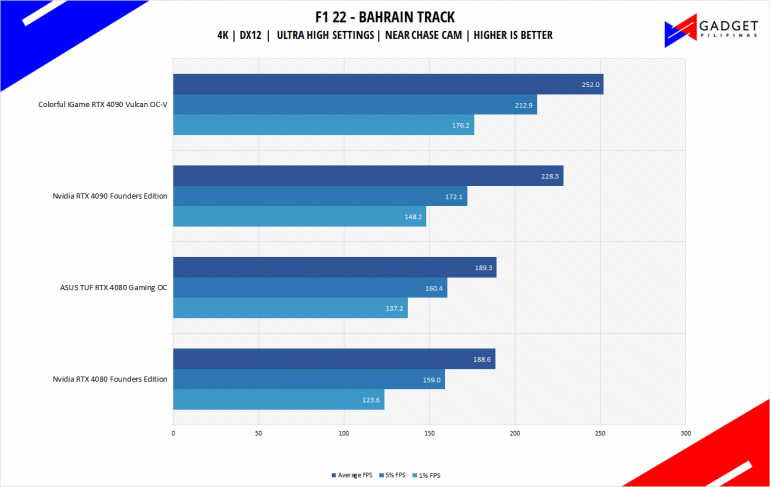
F1 2020 is the official video game of the 2020 Formula 1 and Formula 2 championships developed by Codemasters. F1 2020 is the twelfth installment in the franchise and uses the Ego Engine 3.0. F1 2020 is a good representation of racing games thanks to its realistic graphics and fairly demanding spec requirements.
HORIZON ZERO DAWN
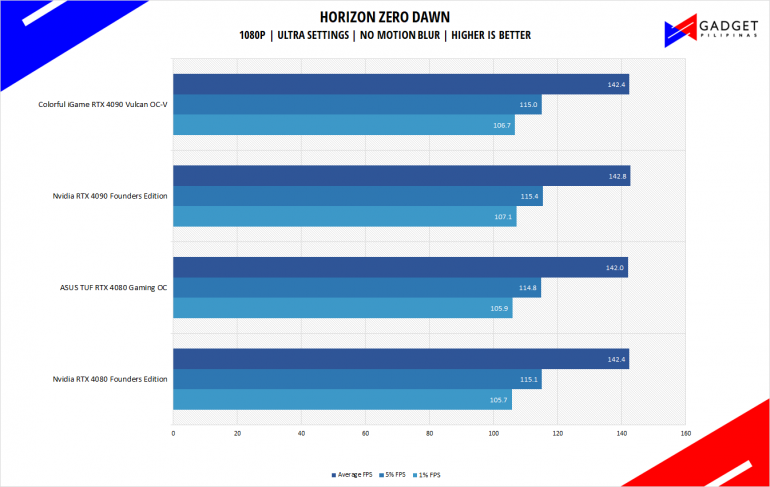
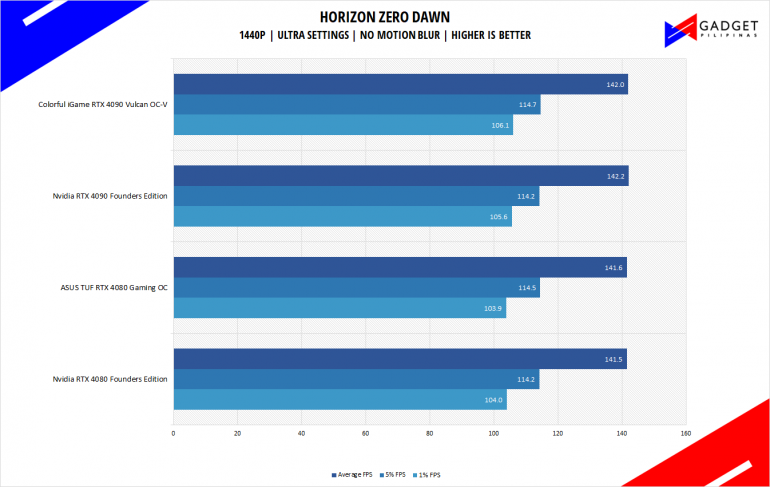
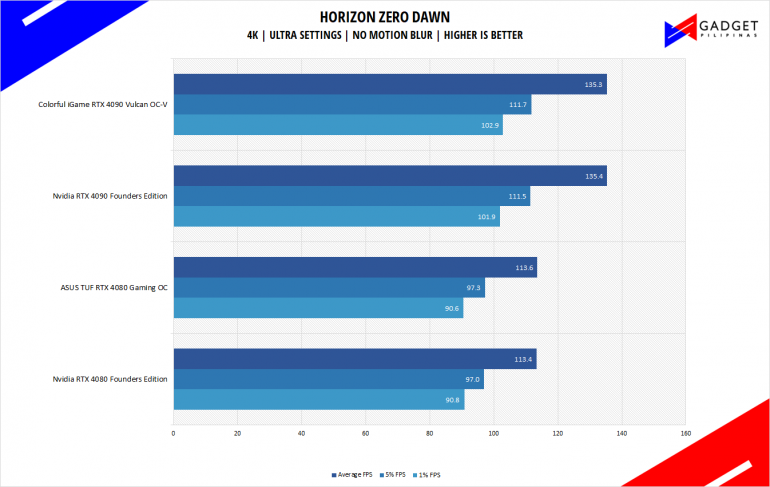
Horizon Zero Dawn is one of the most popular console-port RPG developed by Guerilla Games and published by Sony Interactive Entertainment. Horizon Zero Dawn is a multi-award-winning action RPG, and its popularity resulted in an exclusive Complete Edition game bundle on Steam.
Nvidia RTX 4080 Founders Edition Ray Tracing and DLSS Benchmarks
Cyberpunk 2077
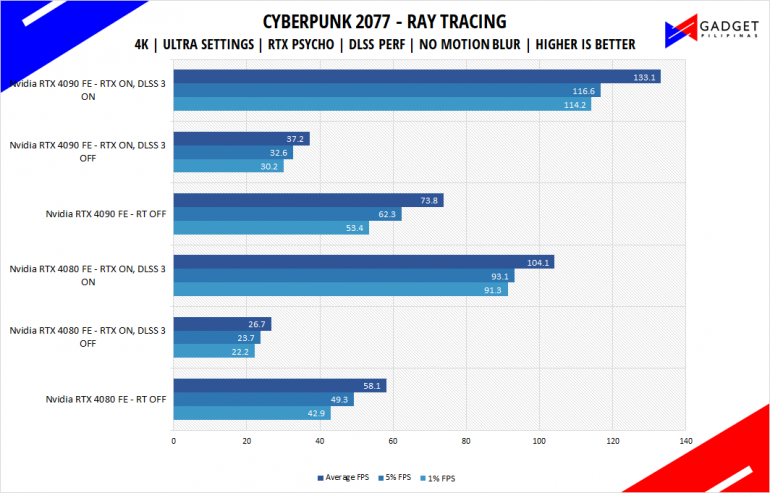
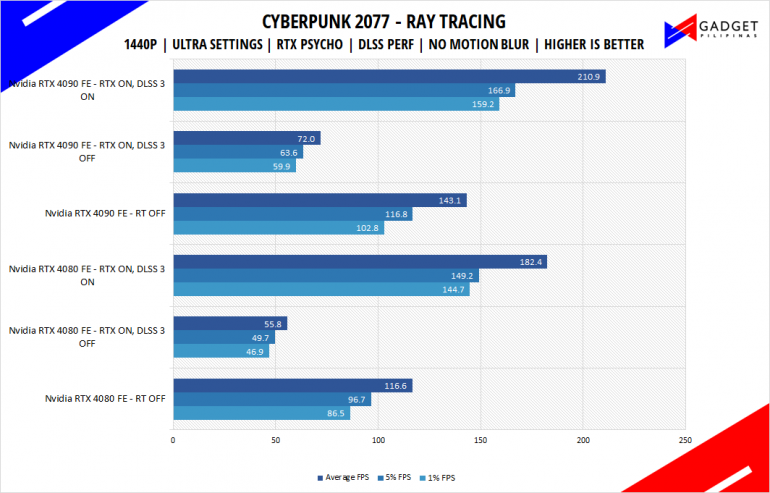
F1 22
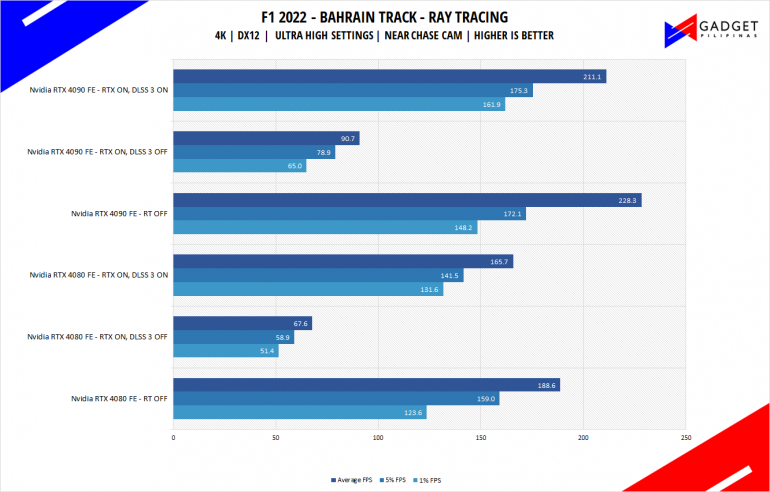
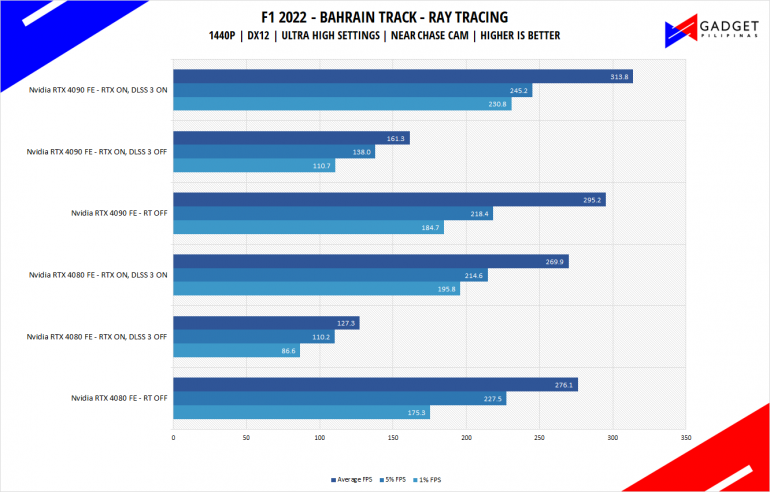
Shadow of the Tomb Raider
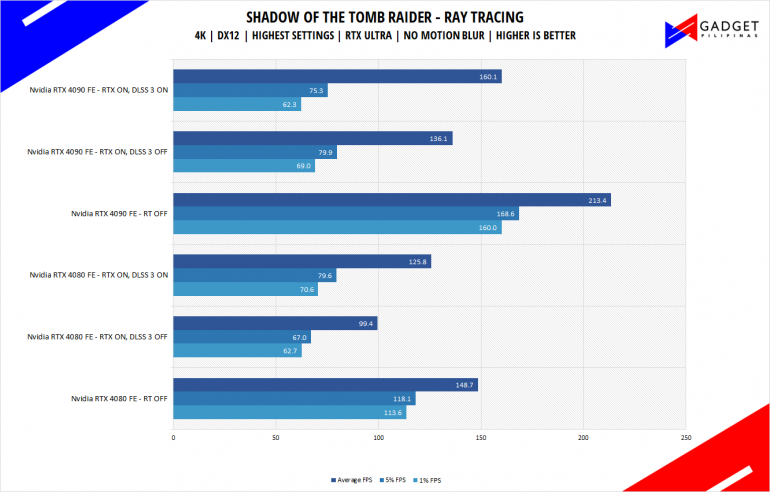
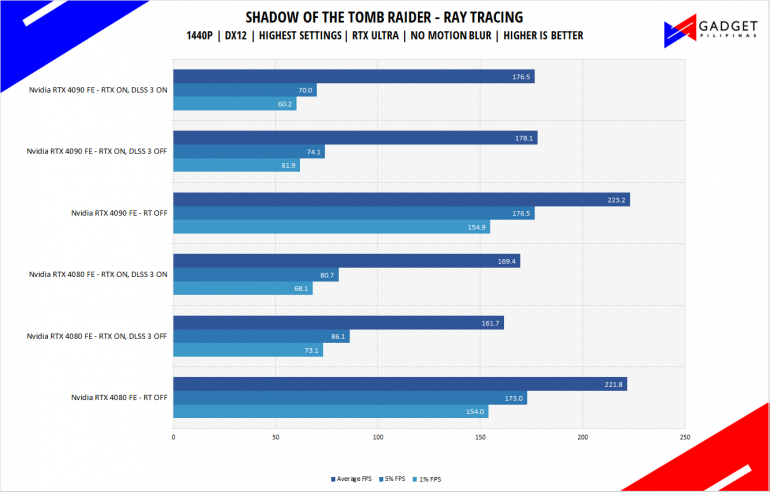
Metro Exodus
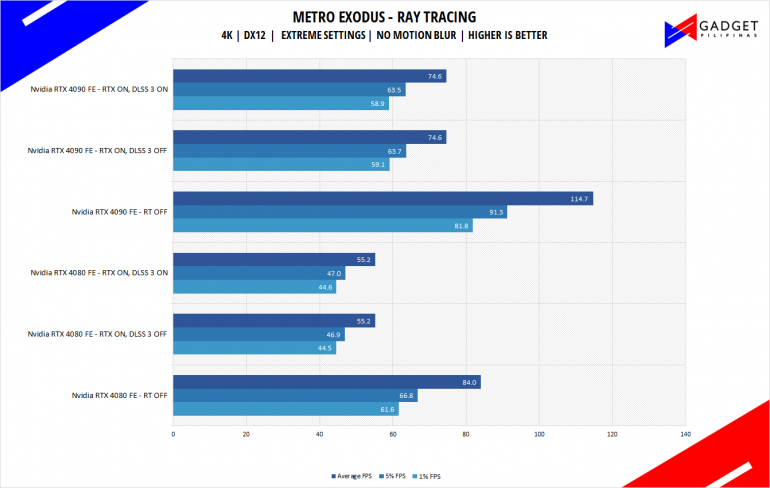
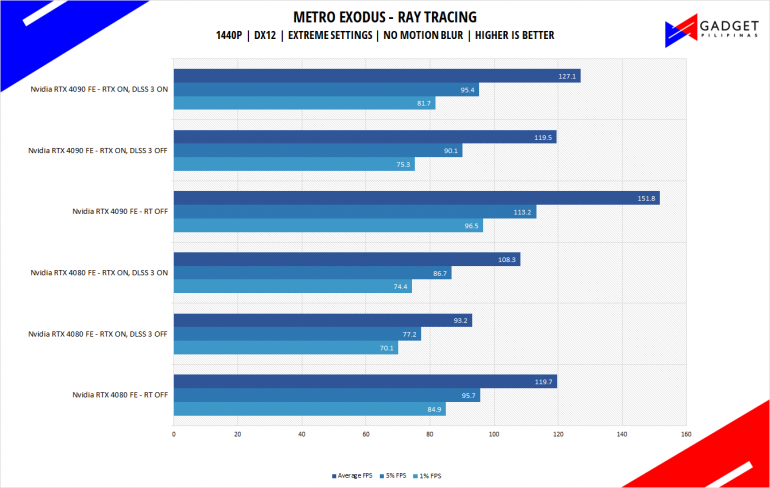
Nvidia RTX 4080 Founders Edition Temperatures and Power Daw
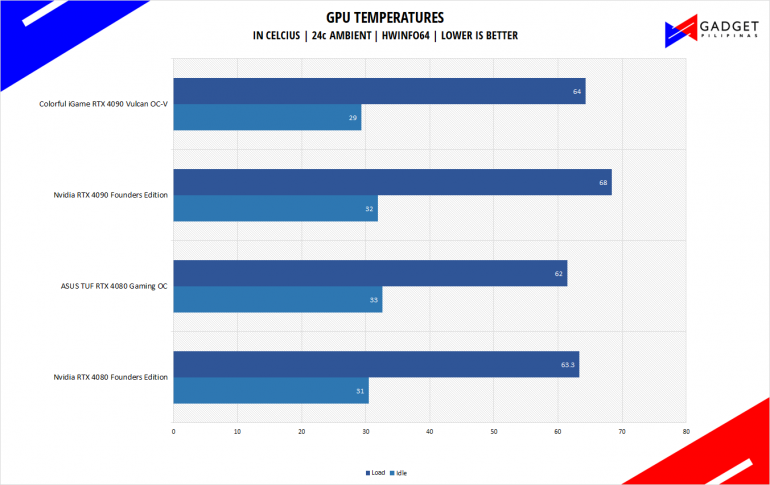
Some may argue that Nvidia is lazy for using the same cooler, an almost 1:1 copy of the RTX 4090 FE on the RTX 4080 FE but the flowthrough design still proves to be one of the most effective coolers which some brands have implemented in their custom cards such as the Colorful RTX 4090. That said, temperatures on the RTX 4080 FE are quite impressive with a cozy 63.3°C with a 31°C idle. The lower 320W TDP translates to a much cooler GPU overall despite the lesser fin density compared to the 68°C on the RTX 4090 Founders Edition.
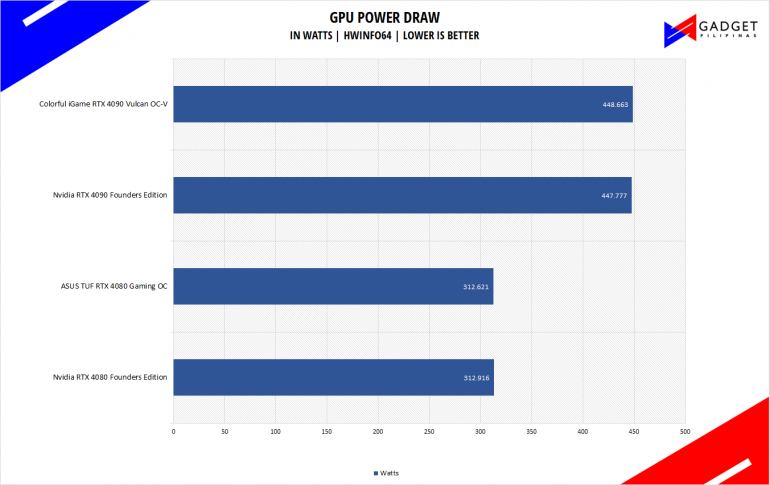
Power consumption-wise, our RTX 4080 FE peaked at 312.916 watts which is slightly lower than the supposed 320W TDP. Not hitting the rated TDP is not a bad indicator as TDPs are calculated differently by brands and serve mostly as a reference as it’s measured as the theoretical maximum amount. If anything, the less than 320W TDP of both our RTX 4080 cards translates to an efficient chip as the AD103 doesn’t need to draw as much power to deliver its performance.
Performance Summary and Conclusion
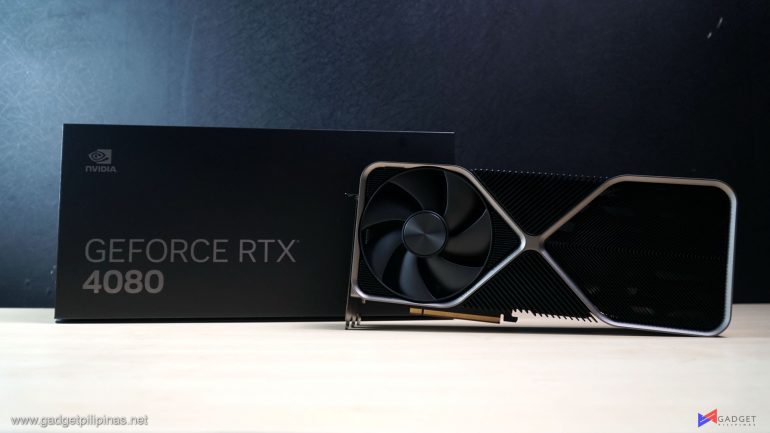
Controversy, inflation, and relaunched RTX 4080 12GB aside, the Nvidia GeForce RTX 4080 Founders Edition delivers its performance improvement over the previous generation RTX 3080 while also being more efficient in terms of power consumption. The RTX 4080 delivers better performance over the last generation GPUs, especially in titles where ray tracing and DLSS are enabled thanks to the all-new Ada Lovelace Architecture. Perhaps the only advantage that the previous generation has is its form factor as the 4080 shares the same cooler requirements with the 4090 despite the lower TDP. ITX and Compact users are in a bit of a bind as we’re likely to see board partners following the 3-slot design like we’ve seen with the ASUS TUF RTX 4080 Gaming OC.
Going back to our earlier predicament, the price. The $1,199 US / Php 82,200 price tag is still a hefty price to pay especially when you’re coming from an RTX 3080 which retailed for $699 / Php 41,000 as it’s almost double or in some countries double the price, more so with Tax. That said, like the RTX 4090, we’re seeing the price premium mainly because of the added features by the Ada Architecture namely DLSS 3.0, Dual AV1 Encoding & Decoding, Shader Execution Reordering and etc. However, unlike the RTX 4090 which brute-forced its FPS thanks to its large CUDA Cores, the RTX 4080’s value mostly like on the aforementioned features rather than the “IPC improvement.” That said, if you’re looking to play games with RTX and DLSS or simply want to take advantage of the RTX 40 series feature set, then the RTX 4080 is the practical choice over the $1,599 RTX 4090. For users who have the RTX 3080 and above GPUs, we recommended holding off on the RTX 4080 unless you really need the features, or better yet splurge and just go for the RTX 4090 instead to maximize your FPS-per-dollar.

Grant is a Financial Management graduate from UST. His passion for gadgets and tech crossed him over in the industry where he could apply his knowledge as an enthusiast and in-depth analytic skills as a Finance Major. His passion allows him to earn at the same time help Gadget Pilipinas' readers in making smart, value-based decisions and purchases with his reviews and guides.

